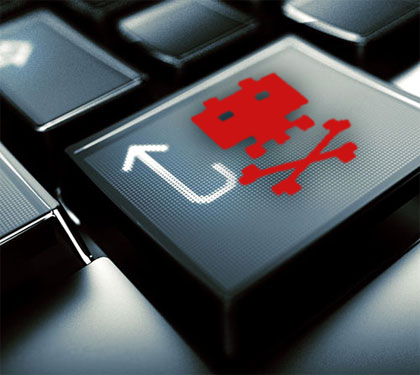 NEWS
NEWS
 NEWS
NEWS
 NEWS
NEWS
![]() A recent report from Kindsight Security Labs, a subsidiary of Alcatel-Lucent, suggests that about 14 percent of home networks got infected with malware in second quarter of this year. 13 percent of home networks showed evidence of infection, with 9% infected by high threat level malware such as a botnet, rootkit or a banking Trojan and 6% of households infected with a moderate threat level malware such as spyware, browser hijackers or adware. As per the Kindsight report, there is almost 50% increase in the high level threat, which was 6% in Q1 2012.
A recent report from Kindsight Security Labs, a subsidiary of Alcatel-Lucent, suggests that about 14 percent of home networks got infected with malware in second quarter of this year. 13 percent of home networks showed evidence of infection, with 9% infected by high threat level malware such as a botnet, rootkit or a banking Trojan and 6% of households infected with a moderate threat level malware such as spyware, browser hijackers or adware. As per the Kindsight report, there is almost 50% increase in the high level threat, which was 6% in Q1 2012.
Kindsight was especially concerned about the ZeroAccess botnet, whch grew to over 1.2 million nodes over the second quarter. ZeroAccess botnet targets users by ad click fraud and eats up the bandwidth. As the botnet generates fraudulent clicks, the website owner collects per-click fees from the advertiser and makes money.
“In recent months, we’ve seen the ZeroAccess botnet update its command and control protocol and grow to infect more computers while connecting to over one million computers globally. The concern with ZeroAccess is that it is using the subscriber’s bandwidth maliciously which will cost them money as they exceed bandwidth caps. And, once the computer is compromised, it can also spread additional malware or launch new attacks,” Kevin McNamee, security architect and director of Kindsight Security Labs, said in a statement.
Besides ZeroAcess botnet, Kindsight also discovered the Flashback Trojan infecting thousands of Mac OS X systems. The Trojan infected approximately 10% of the home Mac users. Some other facts were also revealed by the report, such as 3321 infected home computers were actively communicating with over 1.2 million Internet peers in Q2.
Unlike Flame and Stuxnet, ZeroAccess botnet is not that famous, but yes it may be even more harmful that the former two owing to the fact that it continues to grow to over 1 million super nodes. Both Flame and Stuxnet fall in the category of sophisticated cyber espionage malware, and are believed to be parallel projects. In fact, Stuxnet is another state-sponsored cyberwarfare as it was produced jointly by the United States and Israel in an attempt to sabotage Iran’s nuclear program. It’s been more than a year since the Internet-worm Stuxnet was first detected and dismantled, and it’s still considered to be a singularly jagged-edged piece of technology developed specifically with the intent of sabotage.
THANK YOU